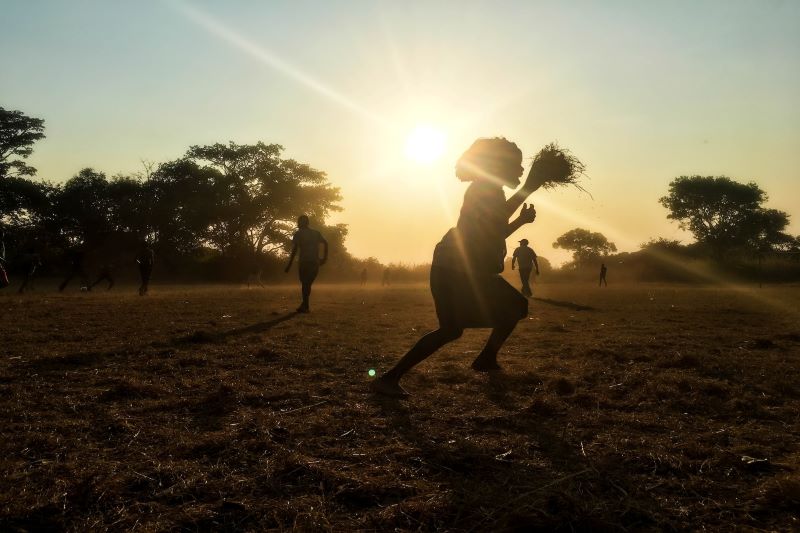Human Trafficking in Zambia

In 2017, the International Labour Organization (ILO) published The Global Estimates of Modern Slavery, approximating that 24.9 million individuals are victims of human trafficking around the world. This prediction includes 20.1 million labor trafficking victims and 4.8 million sex trafficking victims. Globally, the ILO estimates 99% of victims to be women and girls. The World Population Review states, “Child trafficking is very common in Africa…where approximately 100% of all human trafficking victims are children.”
Causes and Effects of Human Trafficking
As mentioned, human trafficking is mainly an issue in developing countries, rather than developed countries. This is mainly due to the various political, social and economic differences between the two groups. Included are various causes and effects of human trafficking, all of which inhibit a developing country’s ability to overcome human trafficking.
Causes:
- Poverty: Poverty offers a vulnerable position for families, thus becoming the target of traffickers. This factor is often due to the poor condition of a country’s economy and/or social inequality.
- Unemployment: Traffickers often use the desperation of the unemployed to persuade them to leave their country. Traffickers use these unknowing individuals to manipulate them into forms of forced labor and sexual exploitation, as victims get threats with potential reports to an immigration officer.
- Displacement: War, political instability and natural disasters force victims into vulnerable positions, thus allowing traffickers to easily prey on individuals and embed them into human trafficking.
Effects:
- Mental Trauma: Victims often face dehumanization and objectification, thus leaving them in a state of mental degradation. Victims often experience post-traumatic stress, anxiety, fear, guilt and shame. These mental conditions can lead to suicide and abuse, forever inhibiting the victim to become economically independent.
- Physical Trauma: Many victims experience physical abuse in the trafficking process. Individuals often face rape, beating and subjecting to other abuses over an extended period of time. Sexual exploitation, a common form of human trafficking, also leads to the increased transmission of sexually transmitted diseases. These physical injuries can lead to an inability to work and death.
- Ostracism: Victims of human trafficking often experience social isolation from friends and family due to personal feelings and cultural beliefs. In the case of Africa, loved ones often blame or shun victims of human trafficking.
Human Trafficking in Zambia
Despite the Government of Zambia’s inability to fully meet the minimum standards for the elimination of human trafficking, the U.S. State Department ranks Zambia on the Tier 2 Watch List, as it is making tremendous efforts to do so.
The most vulnerable population to human trafficking in Zambia is mainly women and children. A poor economy and low social status encourage traffickers to use women and young girls for sexual exploitation, while they often use young boys for forced labor in agriculture, textile production, mining and other profit-inducing businesses.
Due to the high rate of migration within Africa, traffickers are also prone to exploiting immigrants desperate to cross borders into another region. The U.S. State Department reports, “Traffickers exploit women and children from neighboring countries in forced labor and sex trafficking in Zambia, including transiting migrants whose intended destination is South Africa. In recent years, traffickers lure Rwandan women to Zambia with promises of refugee status, coerce them into registering as Democratic Republic of Congo (DRC) nationals seeking refugee status in Zambia, and subsequently exploit them in sex trafficking and threaten them with physical abuse and reporting them to immigration officials for fraudulent refugee claims.”
Efforts to End Human Trafficking in Zambia
The U.S. State Department applauds the Zambian Government for its efforts to end the practice of human trafficking, as it states, “The government…[has] launched various awareness campaigns via billboards, radio shows, text alerts and pamphlets in rural and border areas to educate local communities on human trafficking.”
Additionally, on December 19, 2019, the United Nations Office on Drugs and Crime (UNODC) partnered with the Zambia Law Development Commission (ZLDC) to validate the Anti-Human Trafficking Act No.11 of 2008. The review was associated with revamping the 2002 Protocol to Prevent, Suppress and Punish Trafficking in Persons (Palermo Protocol).
The Road Ahead
Reducing human trafficking in Zambia is a daunting task. Despite this, the Zambian government has made significant efforts to improve. By raising awareness and developing plans to advance socially and economically, the prevalence of human trafficking in Zambia can reduce.
– Sania Patel
Photo: Unsplash
